Ways to Create a WordPress eCommerce Site | Knowledge Base Guide
- Why using WordPress for eCommerce is a great idea?
- BigCommerce vs WooCommerce
- Other WordPress eCommerce website builders
- Selecting the best WooCommerce hosting and domain name
- The most useful WooCommerce plugins
- Product pages: how to set them up with WooCommerce?
- SEO tricks: make your WordPress eCommerce website more visible
- A few words about WooCommerce dropshipping
- Choosing the best WooCommerce payment gateways
- What WooCommerce CRM to choose (and why do you need it at all)?
- GDPR compliance: what is that and do you need to make your WooCommerce website compliant to it?
- Top-5 WooCommerce product vendors of TemplateMonster
- Conclusion
I don’t know all the reasons why you want to create a WordPress eCommerce site. Maybe you did a blog and suddenly realized that there are enough people reading it that you might be able to monetize your hobby. Maybe you have a business and want to work online instead of renting an office or store location. One way or another you decided that you want to create a website to get more profit.
In fact, building a WordPress eCommerce site is not a very complicated thing – there are dozens of CMS that could help you make that task simpler and speed up the process. Shopify, PrestaShop, Virtuemart – these are all content management systems which were created especially for commercial purposes. However, if you would like to hear my opinion (you are reading this article, so I assume you do) I would recommend building a WordPress eCommerce site. I, personally, prefer WordPress over all other content management systems. However, I can also name lots of other reasons to choose WordPress.
Why using WordPress for eCommerce is a great idea?
One of the favorite reasons WordPress lo=8vers give in the discussion about CMS is its popularity. They say something like “Percentage of websites using WordPress for eCommerce is about 22%, so you should join the majority.” I don’t like that point. Lots of people like Justin Bieber but it doesn’t mean you have to listen to his songs because of that. So, let’s take a look at the points which I consider to be the important pros of using WordPress for eCommerce.
- WordPress online store will be completely free for you. If you create your website on WordPress – you pay only for the hosting service and domain name. WordPress itself is completely free, just as the WooCommerce plugin. There are lots of reliable and inexpensive hosting services, so your WordPress eCommerce site will cost you only about $4 per month.
- WP is an open-source product which means anyone can join the developers' team. That also makes it not only free but also constantly evolving, so you can be sure you are using the cutting-edge software. WordPress team fixes the bugs and tries to make the whole project better and there is a really huge crowd of people who help with coding and other stuff.
- You will have no problems with understanding how the admin dashboard and different functionalities work. WordPress is, generally, very user-friendly. In most cases, it is quite clear how to work with pages and posts. Even if you have some problems – there are so many written and video tutorials about WordPress that you will easily find answers to any questions. Besides that, there is a huge community of WP lovers, who will be glad to give advice or a hand in solving your problems.
- Thanks to the huge collection of plugins available, WordPress is extremely flexible. You will be able to find a ready-made solution for every functionality you need. And what’s also very cool – most of them will be free. Plugins are easy to install and, in general – easy to work with. That’s why WordPress became so versatile – with the help of extensions you can add almost any functionality and transform the blog into any website you need.
- The plugins can even boost your SEO and loading speed. Both of those features are very important for a successful site, so you can’t ignore it. SEO helps you become visible in the search results list. To get organic traffic you need the link to your WordPress eCommerce site to land on the first page of search results (users almost never check the second, third, or other pages). Loading speed is a feature that defines a user’s comfort. No one likes waiting. The faster your website downloads – the less chance of people leaving it without waiting for the homepage to open.
- It depends on the template but primarily WordPress eCommerce sites are mobile-friendly. That’s not a surprise; in this modern era of high mobility, people prefer to surf the web from their portable device. If your website doesn’t look good from a smartphone, you will have fewer visitors, which is crucial for business.
BigCommerce vs. WooCommerce
As I mentioned before, there are CMS created especially for commerce reasons. BigCommerce is one of them – it is a website builder that helps you create an online shop without any time-consuming and complicated actions. I’ve told you that WordPress is better than other variants, so it is time to prove that statement and compare WordPress with the another CMS. First of all, let’s talk a little about what the difference is between these two platforms.
BigCommerce is a builder. This means that you register an account on the BigCommerce website and create your eCommerce project right there. The platform gives you all the tools you need to create an online store, including hosting service and domain name. You have to choose one of the ready-made BigCommerce templates and customize it according to your vision of the website’s appearance.
WooCommerce is a plugin, installed on WordPress. It helps you create a WordPress eCommerce site out of any site you previously made on this CMS. The plugin adds all the commercial functionality you may need for your business. WooCommerce is an instrument for monetization your web property.
What else?
|
BigCommerce |
WooCommerce |
|
| The number of eCommerce websites built on this platform (BuiltWith.com data) | 159,090 | 2,386,885 |
| Pricing | Starts from $29.95 per month | The plugin is free. The cost of hosting service starts from about $4 per month |
| Payment options available to the website owner and his customers | 73 payment systems, including PayPal, Amazon Pay, Square, and Stripe | 11 free payment gateways (including PayPal, Square, eway and PayFast) and 64 paid ones |
| Compatible plugins and apps | 600+ | 55,000+ |
| Scalability | You can expand your shop as you need | Depends on the hosting and its capabilities |
| Support | Database, community, email communication, text chat, phone support | Documentation, huge WordPress community, tons of videos, email support |
| Design flexibility | A library of ready-made free and paid templates | All the themes for WordPress that exist on the web |
Other WordPress eCommerce site builders
Of course, BigCommerce is not the only eCommerce website builder you can find on the web. I’ve already compared one with the WooCommerce and now I’m going to tell a few words about other options. I still think that using WordPress WooCommerce plugin is the best solution but you should at least know the other available variants. I won’t mention the Gutenberg – it is a default builder for WordPress, so you will meet it one way or another.
Elementor
This drag-and-drop builder is my favorite. You can use it on WordPress; it is a plugin that adds page builder functionality to the site. It is possible to use it with the Gutenberg Editor or in place of it. Creating a WordPress eCommerce site with Elementor WordPress page builder is easy. You pick the elements, drop them onto the working field and then customize it according to the rest of the design. That’s why it is called a “drag-and-drop” website builder.
By the way, there are lots of plugins created to expand the available functionality of Elementor. That is another point I love that builder for. To make the process of product page creation even simpler you can use, for example, JetWooBuilder plugin. It is an extension that adds about 19 widgets to the Elementor customization panel. Those widgets will help you in your WordPress eCommerce site creation – they can add ratings, prices, product grids, and other features directly to the page.
Main pros:
- It is free. There is a paid version with extended capabilities, but the main app is free of charge.
- Elementor is very flexible. There are dozens of widgets available for it.
- The interface is very simple. Also, it is really user friendly – it won’t take long to understand how it works.
- There is a huge community of Elementor lovers. This means that you will always be able to find help and answers to your questions there.
Visual Composer
This is another website builder that you can install to WordPress and use to customize the ready-made template pages. WordPress Visual Composer is also a drag-and-drop page builder, so the interface and functionalities are quite simple. Thanks to its responsiveness you can use it even from your smartphone or tablet. The number of available widgets is adequate enough to create a nice and efficient WordPress eCommerce site.
Main pros:
- Has a free version. However, the premium one has many more functionalities and options.
- You can save presets. With Visual Composer, you can create your own elements, save them, and then use them on other pages or sites.
- Template-saving option available. You can also set the rows, columns, and elements, save them as a template, and then use them somewhere else.
Shopify
Last but not least in this list will be a website builder that is not compatible with WordPress. If you want to use Shopify – you will have to create the website on their platform and do the customizations there too. Your online store will be hosted on the Shopify servers. On the other hand – you won’t have to think about the hosting and domain name. This builder was created for eCommerce websites, so it has all the necessary instruments. It is also scalable and when you would like to grow the business – that won’t be a problem.
Main pros:
- You can sell on multiple other platforms with the help of Shopify. For example, on Amazon, Facebook, or Pinterest.
- Well-written documentation could explain how to work with this app. There are lots of guides and tutorials about working with Shopify.
- There are lots of add-ons for it. Just like in the case of Elementor they expand the capabilities of the website builder.
Selecting the best WooCommerce hosting and domain name
When you start looking for the best WooCommerce hosting you just need hosting that will normally support WordPress. WooCommerce is a WP plugin, so you need reliable hosting to install it there. Here is a list of features you have to pay attention to while choosing a hosting provider:
- Speed. The first thing you need to check is the downloading speed of your WordPress eCommerce site. It depends on the hosting, so the provider has to guarantee you normal loading speed. As I said previously – nobody likes to wait for something.
- Security. The users’ data has to be safe and secure. Of course, you won’t be able to protect users from everything (if someone has a goal to break your site – he will do it one way or another) but the information has to be saved at least from the inexperienced hacker.
- Scalability. After some time, you will want to scale your business, that is for sure. When the business goes smoothly and successfully there won’t be any reasons not to expand it. You have to choose a hosting provider that will be able to give you more “space” for your WordPress eCommerce site. It is not really important at the beginning but you still have to think about it before you start creating a WordPress eCommerce site.
If you need a step-by-step tutorial – check out our “Easy as LEGO” article. It gives detailed instructions about website creation.
There are dozens of different hosting services on the web and it could be a little complicated to choose the best hosting for WooCommerce. In this case, you can take a look at the recommendations we gathered in the “5 Best WooCommerce Hosting Options in 2019” article.
The most useful WooCommerce plugins
I’ve already mentioned that a huge variety of plugins is one of the most important advantages of WordPress. And since WooCommerce is a WordPress plugin, there are lots of useful add-ons created especially for it. Those extensions add useful functionalities to your WordPress eCommerce site and help you to make it more convenient both for you and for the customer. However, when it comes to choosing what you will install to your website it could be confusing. That’s why I gathered a list of plugins I consider to be the most useful (and they are free, which is also important).
YITH WooCommerce Wishlist
When the customers get a chance to share their wishlist to social media it is really cool not only for them but for you too. In this case, the client gets a chance to show off and you get a little advertisement when friends and relatives of your visitor see your products and come to you too. YITH WooCommerce plugin allows your customers to add all products to a wishlist and then share that page to any social media. Afterwards, he could easily move the products to the shopping cart to purchase them.
Pricing: free
Who will need it: any online store
YITH WooCommerce Quickview
It would be annoying if you want to take a closer look at the product you need but have to go to another page to do so. Lots of customers hate that and if you don’t have a quick view option – you could start losing clients. This WooCommerce plugin will add that functionality to your WordPress eCommerce site if the template doesn’t have it. You will be able to set the action which opens the quick view window and customize its appearance.
Price: free
Who will need it: any online store
YITH WooCommerce Compare
People like to compare different products they consider nice to define which one is better for them. Convenient functionality that helps clients to compare two products in the clearest way makes the user experience much better. Happy customers will come back to your website again and again, so if your theme doesn’t offer such functionality – download YITH WooCommerce Compare plugin.
Price: free
Who will need it: any online store that still doesn’t have it
YITH WooCommerce Ajax Search
The search bar has huge importance for the website’s user experience. If the navigation is not perfectly clear – the search bar will be the next step in the customer’s journey through your WordPress eCommerce site. Ajax Search is a great app because it helps the user with searching. He doesn’t have to type the name of the product precisely – the smart search bar will offer him variants according to the words he already entered.
Pricing: free
Who will need it: any online store
WooCommerce Multilingual
Are you going to expand your online business for customers abroad? Then you should think about offering an option to change the language of the website. These WooCommerce plugins will help you make your online business platform truly multilingual. It will glue together your WordPress eCommerce site and WPML, help you to translate all the items on the site, and switch the languages in just one click.
Pricing: free
Who will need it: WordPress eCommerce websites that have foreign-speaking customers
Extra Product Options
Sometimes you have so much to tell about your product that a simple field with description is just not enough. Extra Product WooCommerce plugin will give you the tools to add radio buttons, extra text areas, checkboxes, and expandable fields to the product card. You will be able to write as much information as you like about your products and show it in an entertaining way, so it won’t bore the viewer.
Pricing: free
Who will need it: business owners who want to describe their products with lots of details
PickPlugins Product Slider
If the template you use for your WordPress eCommerce site doesn’t have a built-in slider functionality and you want to decorate the homepage with a little animation effect – you definitely need this plugin. It will add a 100% responsive product slider anywhere on the page. You will be able to customize it according to your needs: set the number of items shown, as well as the autoplay and hover effects.
Pricing: free
Who will need it: WooCommerce lovers who want to have a pretty slider somewhere on their website
Variation Swatches
When you sell products that look almost the same but can go in different variations – you need to add a variation option to the product description. This WooCommerce plugin will make adding such an option as easy as child’s play. Need to add variants of color, size or image? No problem, with Variation Swatches it will be really easy.
Pricing: free
Who will need it: people whose business is connected to clothing, jewelry, accessories, instruments, or electronics
Custom Facebook Feed
This is one of the best Facebook add-ons for WordPress. Of course, you will need this WooCommerce plugin only if your business has a Facebook page. However, if you don’t have a page on Facebook – you definitely have to think about creating one. Social media is a very powerful tool for advertising and promotion, so a Facebook feed plugin could help you to expand your audience. This nice WordPress Facebook plugin will add a feed to your website. You can customize it according to your needs and taste, and make it look nice with the design of your site.
Pricing: free
Who will need it: website owners who created a page on Facebook for their business and want to use it for promotion
Easy Facebook Like Box
It is obvious from the title, that this Facebook WordPress plugin will make it simpler for visitors to like and share your social media posts. This Facebook widget shows the feed of the page you connected to the WordPress eCommerce site and gives you an opportunity to customize the box and set the auto pop-up. This means the window will appear automatically in the visitor’s view and you can choose the way it appears.
Pricing: free
Who will need it: business websites which want to grow their audience through Facebook
Page-list
When you need a sitemap somewhere on the website it could be a little complicated to create it if you have dozens of pages. In this case, it is great to have a plugin that could create a page-list for you. This WordPress sitemap plugin was created to make your life easier. It allows you to create and add to any page a sitemap of all pages and posts you created for your site. This sitemap WordPress widget allows you to sort the pages, subpages, and products with thumbnails quickly and almost without any efforts from you.
Pricing: free
Who will need it: website owners who need a sitemap on their website
Product pages: how to set them up with WooCommerce
So, you bought the hosting, chose the domain name, downloaded and installed plugins, took pictures, and defined prices. The WooCommerce is ready and you are too. That’s the right time to start creating the product pages. After all, you won’t get your profit without them, would you? It is not very complicated with the WooCommerce plugin – it makes managing the WordPress eCommerce site sufficiently easier.
When you installed and activated the WooCommerce plugin a tab “Products” appeared in the left-side menu. Hover the pointer over that tab and choose “Add new” option from the drop-down menu. You will open the product page creation window. As you can see, every product has to have a product name, brief description, image, and price.
Under the main text field, you will find several additional tabs where you can fill in some important information.
- Inventory. Here you can set the stock status of every product item and match it with the Stock Keeping Unit.
- Shipping. This tab is for physical products only. It allows you to add shipping details to the item description – weight, size, height, length, and shipping class.
- Linked products. These are items that are somehow connected to the current product you are describing right now. It could be accessories or similar products.
- Attributes. In this tab, you can add additional information like brand, color, gender, manufacturer, material season, or size.
- Advanced. This tab allows you to add a purchase note and menu order. Also, you can choose to enable reviews or not.
Virtual and downloadable products
Besides physical items that have size and weight, there are two more categories of products: Virtual and Downloadable. Selling any of them, you can deliver a fully personalized shopping experience to your customers by means of WordPress eCommerce add-ons.
Virtual products are those that have no physical part. For example, some services or gift certificates are virtual products.
Downloadable products are those you can download to your computer after purchase, such as software or stock photos.
There are products that could be virtual and downloadable at the same time – like online cinema or ebooks. To add a virtual or downloadable product you have to check the boxes near “Virtual” or “Downloadable” options. After that, the “Shipping Details” tab will disappear and you will get the additional options to set (like Download limit or Download expiry).
SEO tricks: make your WordPress eCommerce site more visible
Any article will tell you that paying attention to WP eCommerce SEO is an absolute must for every website – well, that’s not completely true. Search engine optimization helps your WordPress eCommerce site to get to the top positions of search results. This will boost the organic traffic and more people will come to your website naturally, by finding the link in Google. However, if you don’t need organic traffic (for example, you create a unique product that no one else could offer) – you can ignore SEO for eCommerce. There are huge chances that your clients will find you even without advertising.
On the other hand, if you are not one of those lucky people who managed to create a unique business – you definitely have to pay attention to SEO. Your competitors try their best to put their websites in the top positions of Google search results (or at least they try to keep their websites on the first page). To win that race you have to use a few SEO WordPress tips that could make your website more visible, popular and, thus, more profitable.
Increase speed
Yep, I’ve already told you this is very important. If your WordPress eCommerce site loads for too long and users leave it before it finally shows something – it badly damages your Google search rate. On the web, everything is recorded and if users don’t want to wait for your website to load – it will affect the way the search engine defines your WordPress eCommerce site.
So, the first trick – make your website faster. You can do it with your own hands – we have a nice tutorial about that. Take a look at our “8 Effective Ways to Optimize Your Website for Mobile Speed in 2019” article – you will find some great advice on boosting up your loading speed. Besides that, you can ask professionals for help. For example, TemplateMonster offers a special service for the clients – Speed Booster. When you order it, the TM Tech Support Team will do the diagnostics of your WordPress eCommerce site and speed it up – almost without any participation from you.
Clean up the permalinks
Long, messy, and complicated URLs not only are hard to remember by users but also are not search engine friendly. Google pays attention to the users’ comfort, so the websites with complicated permalinks will be rated lower than sites with convenient and clear ones.
To make the permalinks nicer, open your WordPress administrative dashboard and go to Settings > Permalinks. In the list of available options choose “Post name” radio button and click “Save Changes”. The URLs that show the title of the post or page will be simpler to remember for the user and easier to read for the search engine.
Constantly analyze your content
The number of keywords in your texts has to be the same or larger than your competitors have. That is a magic key to step out of the line of similarly good websites. Of course, that will define your website only for the search engine. Your WordPress eCommerce website has to be readable and optimized for search engines at the same time – and that is one of the most complicated tasks.
To make it simpler you can use some plugins. For example, Yoast SEO is a great widget that makes the SEO analysis of the eCommerce website much easier. It has free and paid versions, so you can give it a try and then decide if you would like to try the premium version.
Work with the images
Image optimization is also a work of great balance. If the pictures are too big – they slow down the website. If they are too small – the users won’t be able to understand what’s on it and that will harm the user experience. WP eCommerce SEO demands product images optimization – checking the size, adding alt texts, and including keywords to the picture titles. Take a look at this great article about image optimization – it will help you to make the pictures work correctly for the SEO.
Optimize the titles
Search engines go through the titles first while analyzing your website content. If you create a clear and accurate titles hierarchy – the text will be simpler to read both by users and search engines. Besides that, make sure you use keywords in titles – it will positively affect the eCommerce SEO. The more accurately you use the titles – the better your results position will be.
A few words about WooCommerce dropshipping
You probably already know, that dropshipping is not, actually, dropping ships somewhere. It is a way of managing the business. You, as a mediator, receive orders from the client and send it to the manufacturer, who creates (or already had created) the required item. The maker then sends the product to the customer directly. As a facilitator, you get a small fee for your work and that is how you make money on that business.
Creating a dropshipping WordPress eCommerce website is one of the simplest ways to quickly start a business online. You don’t have to rent a storehouse or additional workers – in fact, you need only a website. So, should you try starting your business with a WooCommerce dropshipping website? It’s up to you. I can only recommend you to go through our large detailed guide about how to dropship with WooCommerce. There you will find the pros and cons of dropshipping, as well as a list of plugins you can use for such a store and detailed instructions about how to start earning money.
Choosing the best WooCommerce payment gateways
When your store is complete and full of products it is time to think about how the users will pay for them. If you have a brick and mortar store somewhere – you can accept only face-to-face payments. However now, in the age of online stores, it won’t be a really convenient solution. You need to have some way to accept payments online, via credit and debit cards. That is why you need a payment gateway.
I guess there’s no need to tell you that a payment gateway is a very important part of your business and you have to choose it carefully. It is quite obvious that your money depends on the safety and reliability of the payments. So, how does that online payment system work? There are two types of payment gateways: direct and redirect.
Direct WooCommerce payment gateway is a system that allows you to receive payments right on your website. It is a little more convenient than redirect type but it gives you some additional responsibility. The task of guaranteeing security to user’s data will be completely yours. If someone will break your site’s security and steal customers – you will be completely responsible for it, so if you choose this type of payment gateway – make sure your website has strong security.
Redirect credit card payment platform makes the user move to another website to finish the payment. Actually, the users are automatically redirected to the site of a payment system where they perform the final steps to spend their money on your product. This WooCommerce payment gateway lets you avoid responsibility but it could be less convenient for your customers. Besides that, for the large established company, it is better to have a direct credit card gateway – it makes the company look more reliable. And now let me list the five best Payment gateways (in my opinion, of course).
PayPal
So far this is the most popular payment system on the web. You can be sure that almost all of your clients already have an account with PayPal. This payment gateway is used by numerous businesses and is 100% secure. It is almost impossible to shop on the internet and never see the PayPal payment option. It could seem a little funny but if the users see PayPal among the available options they tend to assume the eCommerce website is more reliable.
Fees: 2.2% of the transaction sum + fixed fee (it is fixed for certain currency or country) – for the payments performed in the U.S. and 4.4% of the transaction sum + fixed fee – for the payments performed outside the U.S.
Currencies: currently PayPal supports 24 currencies, including American Dollars, Euro and U.K. Pound Sterling.
Countries: more than 200.
Stripe
This is another popular and reliable payment gateway. It is exceptionally secure because it doesn’t allow the website to cache the user’s payment data. To get the information the website is exchanging with the WooCommerce Stripe gateway you will need a special certificate. Besides that, Stripe is a direct payment gateway which adds some additional points to your authority and makes the user experience better.
Fees: 2.9% of the transferred sum + 30¢ for credit and debit cards, 3.9% of the transferred sum + 30¢ for international cards
Currencies: about 135 currencies
Countries: it is currently working in 34 countries
Braintree
This is both a WooCommerce and PayPal solution; a payment gateway created by both these companies in cooperation. Braintree WooCommerce payment gateway is especially focused on fraud protection. It offers you as a website owner all the tools to validate users and protect the customers. Besides that, it gives you detailed reports that make analyzing the efficiency easier. All the most useful instruments like processing refunds and capturing charges were taken from WooCommerce, so you can be sure they work perfectly.
Fees: 2.9% + $0.30 for each transaction
Currencies: over 130 types of currency
Countries: more than 45 countries
Amazon Pay
This payment gateway was created originally to serve the Amazon clients and now if you are doing affiliate marketing and sell products from Amazon – this credit card system will be just perfect. The users could pay for the products using their Amazon accounts and all that – without leaving your website (yeah, Amazon Pay is also a direct WooCommerce payment gateway). Amazon Pay provides you with a fraud detection system and is optimized to suit mobile and tablets perfectly.
Fees: 2.9% + $0.30 for web and mobile transfers and 4% + $0.30 for physical products and services
Currencies: about 15 different currencies
Countries: 17 countries including the USA
Apple Pay
This payment system was designed not only for online transactions – it could help iPhone users to pay for any kind of products even in brick and mortar stores. However, WooCommerce Apple Pay payment gateway will be a pleasant feature for customers who use iPhones. It is also a direct payment system; it doesn’t require moving to another website – everything is performed right on the page customer is in currently.
Fees: 2.9% + $0.30 for each transaction
Currencies: 12 currencies are available for users
Countries: you can use Apple Pay in 55 countries
What WooCommerce CRM do you choose (and why do you need it at all)?
Did you expect to manage an online store without a customer relationship management application? Oh, come on, you won’t be able to serve your clients really well if you are not going to save some information about them. CRMs, according to the title, are very helpful in customer management. Let me list the reasons to start using CRM:
- More information about each customer. You will be able to save it in the CRM data library.
- Advanced customer support. If you have their mail saved – you can provide them more support.
- History of purchasing. After structuring the data, you will be able to see what every user was interested in, what he bought, and when.
- The management of leads. When every request lands into your CRM system you can be sure you won’t miss anything.
Metrilo
This is one of the CRM systems made to work perfectly with WooCommerce, so you won’t need to spend any additional efforts to make it work with your website. There are available extensions, suitable for a WooCommerce website. Metrilo tracks every customer from the moment they enter the website and create a full-scale client profile. You will be able to get access to every person’s account and summary information about purchases and customer behavior. Besides that, this CRM allows you to set an automatic response and offer perfect customer service to your clients.
Pricing: Starts from $119 (there is a 14-day free trial)
Compatible with: WooCommerce, Magento, Shopify
Agile CRM
All-in-one CRMs could help you automate sales on one platform and allow you to manage your customers, avoiding information leaks. Agile CRM is a cloud-based SaaS service with an understandable and clear interface. It works fast, is completely responsive and mobile-friendly, and gives you an opportunity to solve sales, service, and marketing tasks in one application. This WooCommerce CRM has more than 15,000 active users that rate it really high. Constant updates will guarantee that you use the most up-to-date software possible.
Pricing: has a free version, premium plans start from $8.99
Compatible with: WooCommerce, Shopify
Zero BS CRM
In fact, the full title of this WooCommerce CRM is Zero Bullsh*t CRM. The team of creators needed a CRM for their project but they couldn’t find a simple and elegant solution. All customer management systems were too complicated and overfilled with different functionalities they didn’t want. So, they created a really laconic CRM – Zero BS. The key principle of that software is “minimum effective dose.” This means you will get from it only those options you really need to achieve your goals – not more and not less.
Pricing: the core is completely free but there are paid extensions, the premium plan starts from $129
Compatible with: WordPress, WooCommerce
GDPR compliance: what is that and do you need to make your WooCommerce website compliant to it?
In 2018, the European Union determined that only 15% of internet users feel that they have full control over the information they provide to different companies on the web. Because a small level of customer confidence was affecting the efficiency of the business, the EU decided to change the rules of data collecting for the platforms who work with EU citizens. That’s why GDPR (General Data Protection Regulation) certification was applied. Here’s a fascinating and well-drawn infographic about GDPR.
These new rules are important only for companies that are working with EU citizens. If you are sure that you won’t expand your business to Europe, don’t sell European products, and never deal with people of the EU – you can ignore the GDPR. On the other hand, it is not very complicated to make your WooCommerce website GDPR compliant and it could be useful for you in the future.
In simple words, GDPR makes website owners give users more control over their personal data. Your WordPress eCommerce website is GDPR compliant if:
- You tell your clients what data you collect, as well as when and for how long it is stored.
- The user is warned with a special notification when you are going to collect some information about him.
- Users can not only access but also download and delete the data you collected about them.
- You sent users a notification with warnings when a security breach has occurred.
As you can see from that list, it is obvious that WooCommerce Privacy Policy and WooCommerce Terms & Conditions pages have to match GDPR requirements. However, there are lots of other pages that need to be properly customized. There are dozens of WordPress GDPR compliance plugins but they won’t solve the whole problem. WordPress privacy policy plugin or WooCommerce terms and conditions plugin can help you a little but you still have to do some things on your own. If you are going to work with clients from Europe – go through our WooCommerce GDPR article. You will find detailed instruction on how to make your WordPress eCommerce site compliant.
Top 5 WooCommerce product vendors of TemplateMonster
I described lots of details about WordPress eCommerce site creation but the article would be incomplete if I don’t tell you about the people who have a lot of experience in this field. Developer teams who create WooCommerce websites and templates for them do their best for you to use the best products possible. There are dozens of WooCommerce product vendors who sell templates on TemplateMonster marketplace. To decide which of them are the best, TM encourages customers to rate the vendors and their products.
Here are the five best WooCommerce product vendors on TemplateMonster marketplace:
Zemez
This is one of TMs biggest, oldest and most experienced vendors. For almost 9 years they have created themes for WordPress, Magento, WooCommerce, Joomla, Shopify, and other CMS. There are 5,307 products available on the TemplateMonster marketplace and they were bought by customers 262,608 times. Users rate this vendor really high. It has one of the highest marks in Design Index, Support Quality Index, and in User’s rating.
Thementic
“There are three reactions to the piece of design – yes, no, and “WOW!”. “Wow” reaction is what we aim” – this is the statement Thementic writes as their main philosophy. This WooCommerce products vendor has worked with TemplateMonster for about 2 years and offers 152 products to clients through its marketplace. They create not only WooCommerce solutions but PrestaShop and VirtueMart too.
Templatemela
Here’s another young and perspective team that has worked in cooperation with TemplateMonster for about 1.5 years. Not much of the TM vendors create templates for BigCommerce – and this team is one of them. They offer 124 themes to the TemplateMonster marketplace clients and they were purchased nearly 600 times. This WooCommerce product vendor also builds a solution for PrestaShop and OpenCart websites.
CodeZeel
Some of TM WooCommerce product vendors sell products for beginners; CodeZeel builds themes for professional use. With their help, lots of web developers can create WordPress eCommerce sites much quicker and simpler. This vendor has been active on TM marketplace for 1 year and 4 months and uploaded 110 products for such CMS like Shopify, WooCommerce, PrestaShop, and others.
Gonthemes
This WooCommerce product vendor uploaded to TM marketplace only 12 WooCommerce themes. However, they were downloaded 111 times. Impressive, huh? These guys do excellent work that is popular among users. They can make a client happy – and that is the most sufficient feature of Gonthemes developer company.
Conclusion
WordPress eCommerce site creation is not as complicated as you might think and now you probably understand a little more about it. Find a cool template, purchase reliable hosting, and install WordPress – and half of the work is done. I’m sure you will be able to create a stunning eCommerce website and get all the profit you dreamed of. Good luck!
Read Also
How to Create a Website [Ultimate Guide]
57 Best eCommerce WordPress Themes: Free and Paid
Tips to Grow Your Online eCommerce Business with WordPress
Best Grocery eCommerce Themes for WordPress in 2019
Don’t miss out these all-time favourites
- The best hosting for a WordPress website. Tap our link to get the best price on the market with 82% off. If HostPapa didn’t impress you check out other alternatives.
- Monthly SEO service and On-Page SEO - to increase your website organic traffic.
- Website Installation service - to get your template up and running within just 6 hours without hassle. No minute is wasted and the work is going.
- ONE Membership - to download unlimited number of WordPress themes, plugins, ppt and other products within one license. Since bigger is always better.
Get more to your email
Subscribe to our newsletter and access exclusive content and offers available only to MonsterPost subscribers.

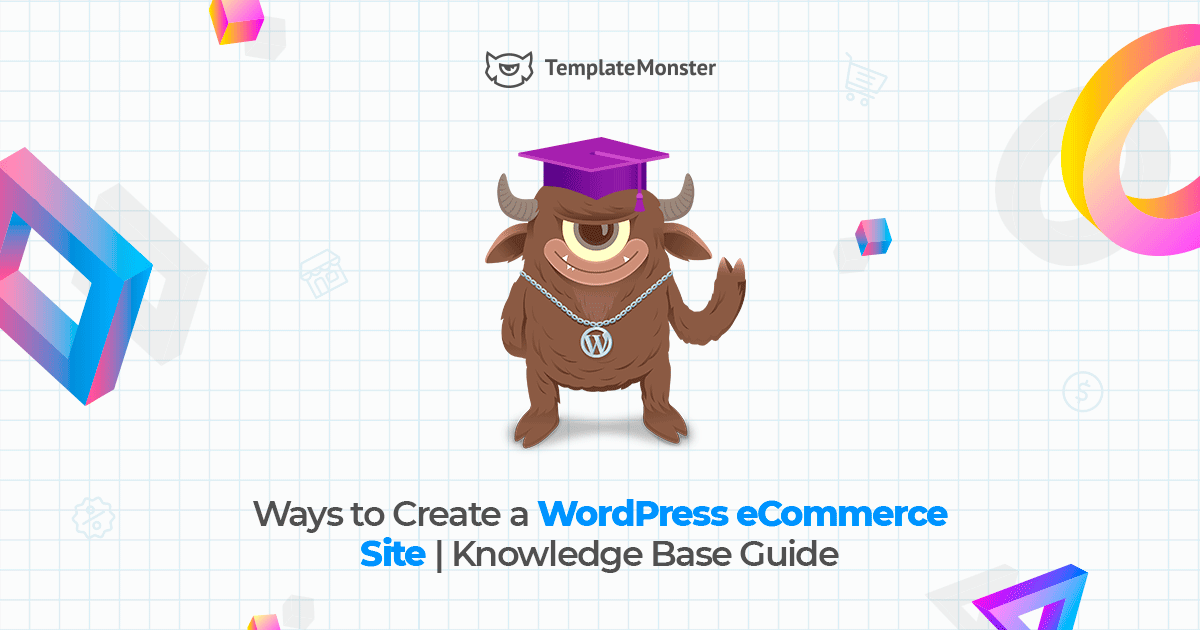







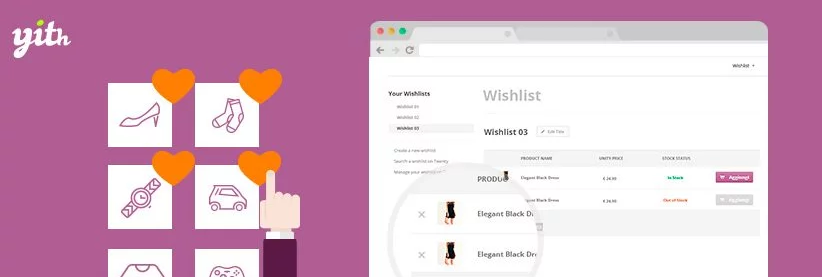













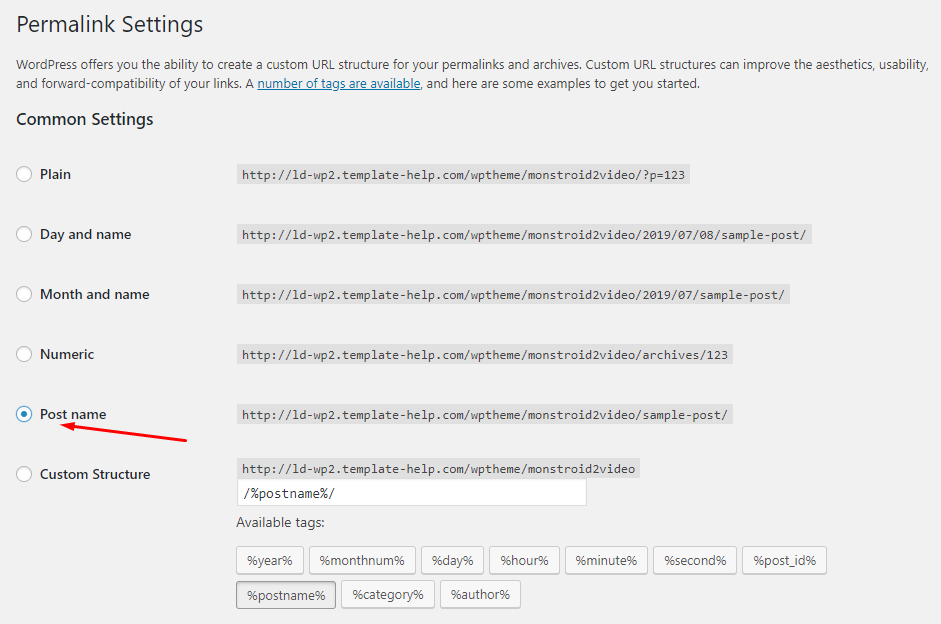





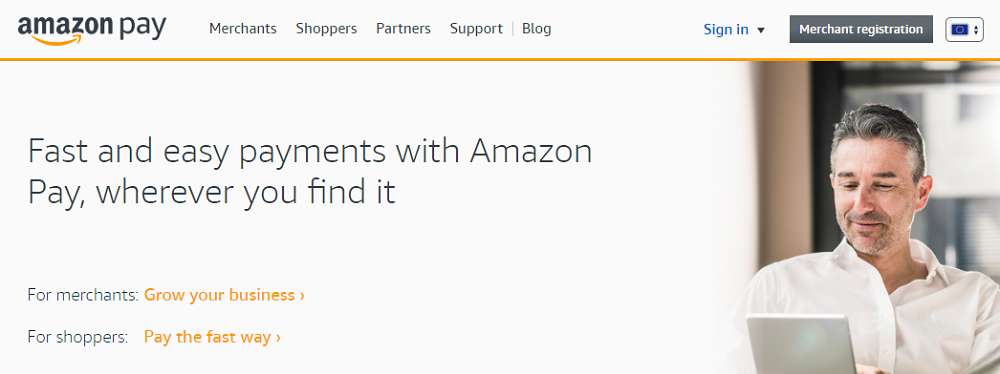

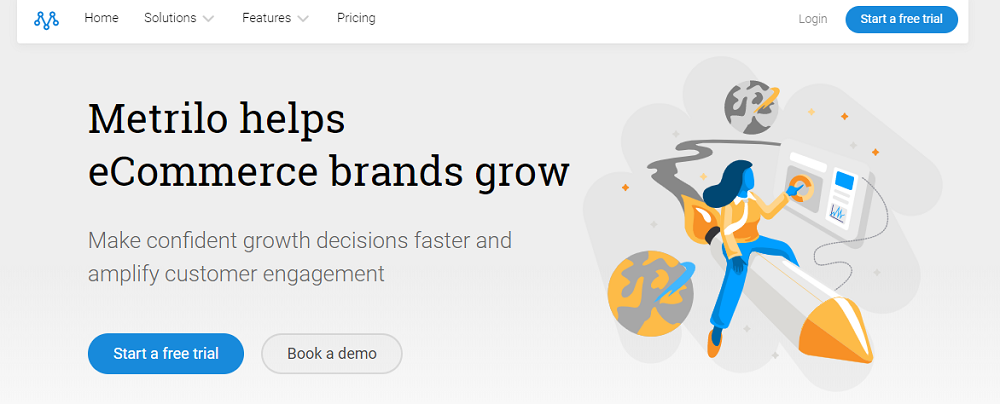
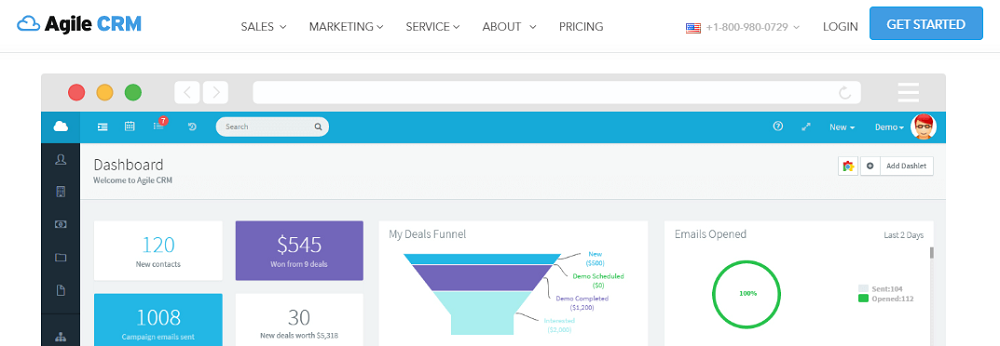


Leave a Reply
You must be logged in to post a comment.